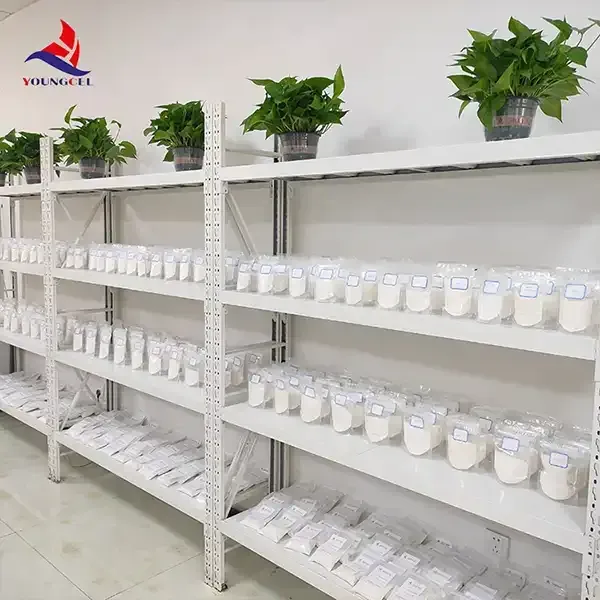Understanding HPMC Detergent Grade Features and Applications
Hydroxypropyl Methylcellulose (HPMC) is a versatile compound that has gained significant attention in the detergent industry. HPMC detergent grade is a modified cellulose derivative that plays a vital role in the formulation of various cleaning products, including laundry detergents, dishwashing liquids, and surface cleaners. Its unique properties make it an essential ingredient in the formulation of effective and user-friendly cleaning solutions.
Composition and Properties
HPMC is synthesized through the etherification of cellulose, which is derived from naturally occurring plant fibers. The introduction of hydroxypropyl and methyl groups to the cellulose backbone imparts nonionic characteristics, making HPMC soluble in both cold and hot water. One of its key features is its ability to increase viscosity at low concentrations, which is particularly beneficial in detergent formulations.
The notable properties of HPMC include
1. Thickening Agent Its excellent thickening capabilities allow formulators to achieve the desired viscosity in liquid detergents. This not only enhances product performance but also improves the application experience for users.
2. Stabilization HPMC acts as a stabilizer in emulsion systems. This ensures that the formulation maintains physical stability over time, preventing the separation of an oil and water phase in detergent formulations.
3. Film-Forming Ability When used in cleaning products, HPMC forms a thin protective film on surfaces. This film aids in trapping dirt and grime, which can be easily removed during cleaning, thereby enhancing the product's effectiveness.
4. Non-toxic and Biodegradable As a non-ionic polysaccharide, HPMC is considered safe and environmentally friendly. Its biodegradability aligns well with growing consumer demand for sustainable products, making it a favorable choice for manufacturers.
Applications in Detergent Formulation
hpmc detergent grade

The use of HPMC in detergent formulations is extensive. Its applications span across various types of cleaning products
1. Laundry Detergents HPMC contributes to the viscosity of liquid laundry detergents. By thickening the formulation, it allows for easier dispensing and improves adhesion to fabrics, enhancing cleaning efficiency. Moreover, its film-forming properties provide better stain-lifting action.
2. Dishwashing Liquids In dishwashing detergents, HPMC helps to emulsify fats and oils effectively. It aids in the creation of stable foam, which is essential for breaking down grease and leaving dishes spotless.
3. Surface Cleaners For surface cleaning products, HPMC serves as a thickening agent that helps the cleaner adhere to surfaces longer. This enables the active ingredients to work effectively, ensuring better dirt removal and surface cleaning.
4. Personal Care Products Beyond traditional cleaning products, HPMC is also used in personal care formulations, such as shampoos and lotions, due to its conditioning properties. When combined with surfactants, it improves the product's overall performance while providing a luxurious feel.
Safety and Environmental Considerations
The safety profile of HPMC is another reason for its increasing popularity in detergent formulations. As consumers become more aware of the ingredients in their cleaning products, they are seeking options that are safe for both human health and the environment. HPMC meets these criteria due to its non-toxic nature and biodegradability.
Conclusion
In summary, HPMC detergent grade is a multifunctional ingredient that plays a crucial role in the formulation of various cleaning products. Its exceptional properties, such as thickening, stabilization, and film-forming abilities, make it invaluable for manufacturers striving to create effective and eco-friendly cleaning solutions. As the demand for safe and sustainable products continues to grow, HPMC will undoubtedly remain a critical component in the detergent industry, paving the way for innovative formulations that cater to modern consumer needs.
-
A Comprehensive Guide to Methyl Ethyl Hydroxyethyl Cellulose: Applications and Industry InsightsNewsNov.24,2025
-
Understanding Methyl 2 Hydroxyethyl Cellulose: Uses, Benefits & Industry InsightsNewsNov.24,2025
-
Hydroxyethyl Methyl Cellulose HEMC: Industrial Uses, Benefits & Future TrendsNewsNov.23,2025
-
HEMC Cellulose: Versatile & Sustainable Industrial Polymer | YoungcelNewsNov.23,2025
-
Methyl Hydroxyethyl Cellulose: Versatile Building Block for Industry & SustainabilityNewsNov.23,2025
-
CAS 9032 42 2: Understanding Polyvinyl Alcohol's Impact on Industry & SustainabilityNewsNov.22,2025




